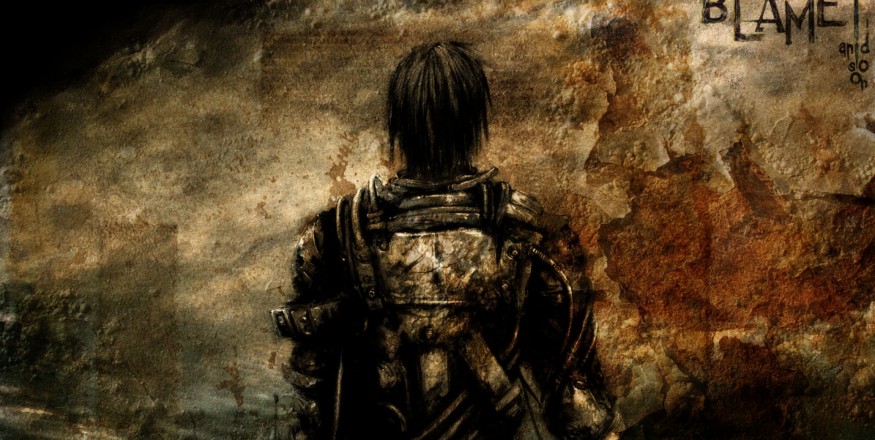The Lesser Key of Solomon, also known as Clavicula Salomonis Regis or Lemegeton, is an anonymous grimoire (or spell book) on demonology. It was compiled in the mid-17th century, mostly from materials a couple of centuries older. It is divided into five books—the Ars Goetia, Ars Theurgia-Goetia, Ars Paulina, Ars Almadel, and Ars Notoria.1145Please respect copyright.PENANAM47Y6TmpH9
Ars Goetia1145Please respect copyright.PENANA4nTGBmJUXF
The most obvious source for the Ars Goetia is Johann Weyer's Pseudomonarchia Daemonum in his De praestigiis daemonum. Weyer does not cite, and is unaware of, any other books in the Lemegeton, indicating that the Lemegeton was derived from his work, not the other way around. The order of the spirits was changed between the two, four additional spirits were added to the later work, and one spirit (Pruflas) was omitted. The omission of Pruflas, a mistake that also occurs in an edition of Pseudomonarchia Daemonum cited in Reginald Scot's The Discoverie of Witchcraft, indicates that the Ars Goetia could not have been compiled before 1570. Indeed, it appears that the Ars Goetia is more dependent upon Scot's translation of Weyer than Weyer's work in itself. Additionally, some material was used from Heinrich Cornelius Agrippa's Three Books of Occult Philosophy, the Heptameron by pseudo-Pietro d'Abano, and the Magical Calendar.
Weyer's Officium Spirituum, which is likely related to a 1583 manuscript titled The Office of Spirits, appears to have ultimately been an elaboration on a 15th-century manuscript titled Le Livre des Esperitz (of which 30 of its 47 spirits are nearly identical to spirits in the Ars Goetia).
In a slightly later copy made by Thomas Rudd, this portion was labelled "Liber Malorum Spirituum seu Goetia", and the seals and demons were paired with those of the 72 angels of the Shemhamphorasch, who were intended to protect the conjurer and control the demons he summoned. The angelic names and seals were derived from a manuscript by Blaise de Vigenère, whose papers were also used by Samuel Liddell MacGregor Mathers in his works for the Hermetic Order of the Golden Dawn. Rudd may have derived his copy of Liber Malorum Spirituum from a now-lost work by Johannes Trithemius, who taught Agrippa, who in turn taught Weyer.
This portion of the work was later translated by S. L. MacGregor Mathers and published by Aleister Crowley under the title The Book of the Goetia of Solomon the King. Crowley added some additional invocations previously unrelated to the original work, as well as essays describing the rituals as psychological exploration instead of demon summoning.1145Please respect copyright.PENANA8lw7gM6Xkf
The Seventy-Two Demons
The demons' names (given below) are taken from the Ars Goetia, which differs in terms of number and ranking from the Pseudomonarchia Daemonum of Weyer. As a result of multiple translations, there are multiple spellings for some of the names, which are given in the articles concerning them.
1) King Bael1145Please respect copyright.PENANA6iaGr1pyXe
2) Duke Agares1145Please respect copyright.PENANAJ4J6APn2pW
3) Prince Vassago1145Please respect copyright.PENANApLgWbixcU4
4) Marquis Samigina1145Please respect copyright.PENANAi17LR0e76c
5) President Marbas1145Please respect copyright.PENANAhEMnxGEiie
6) Duke Valefor1145Please respect copyright.PENANAHEIWCA4lvg
7) Marquis Amon1145Please respect copyright.PENANAb9FQ1Qn2oO
8) Duke Barbatos1145Please respect copyright.PENANAEHsSvJu5oV
9) King Paimon1145Please respect copyright.PENANAOJ96zuGzxI
10) President Buer1145Please respect copyright.PENANAZpXTfKD23U
11) Duke Gusion1145Please respect copyright.PENANA3KWnNmaNJA
12) Prince Sitri1145Please respect copyright.PENANAPQFkNiC2kv
13) King Beleth1145Please respect copyright.PENANA7BrdLqWHyg
14) Marquis Leraje1145Please respect copyright.PENANAKF5sDvsu3b
15) Duke Eligos1145Please respect copyright.PENANAhMQEOsBdbc
16) Duke Zepar1145Please respect copyright.PENANA2j6zoA0biV
17) Count/President Botis1145Please respect copyright.PENANAHSRJW8Xy7Q
18) Duke Bathin1145Please respect copyright.PENANAmo3TCUEt9M
19) Duke Sallos1145Please respect copyright.PENANAb3kyKGLCRs
20) King Purson1145Please respect copyright.PENANA4HZtFO2v1F
21) Count/President Marax1145Please respect copyright.PENANAoiEFx7dZAV
22) Count/Prince Ipos1145Please respect copyright.PENANAKu3PIjY0NS
23) Duke Aim1145Please respect copyright.PENANAX7etzigIgz
24) Marquis Naberius1145Please respect copyright.PENANARlxG3hHjEk
25) Count/President Glasya-Labolas1145Please respect copyright.PENANAdte8U4gCiY
26) Duke Buné1145Please respect copyright.PENANA0W4UpY8nS7
27) Marquis/Count Ronové1145Please respect copyright.PENANATO1dVFewW8
28) Duke Berith1145Please respect copyright.PENANAaS9HgYxOmA
29) Duke Astaroth1145Please respect copyright.PENANAag0acr9PTX
30) Marquis Forneus1145Please respect copyright.PENANA5BCsPDMaex
31) President Foras1145Please respect copyright.PENANAhgrDMJxCPc
32) King Asmoday1145Please respect copyright.PENANAq19xBwU9gv
33) Prince/President Gäap1145Please respect copyright.PENANAWtGU3UOZXn
34) Count Furfur1145Please respect copyright.PENANAPP84YNf6jd
35) Marquis Marchosias1145Please respect copyright.PENANAlrfdMF8T5J
36) Prince Stolas1145Please respect copyright.PENANAeGaQfqj1J4
37) Marquis Phenex1145Please respect copyright.PENANAF8YumlG0eO
38) Count Halphas1145Please respect copyright.PENANAf0yyBg9PFS
39) President Malphas1145Please respect copyright.PENANAJaZxV3T7fc
40) Count Räum1145Please respect copyright.PENANA7Wh0bK6IDq
41) Duke Focalor1145Please respect copyright.PENANANtvk40lUKK
42) Duke Vepar1145Please respect copyright.PENANAy3XUrjP5G3
43) Marquis Sabnock1145Please respect copyright.PENANAbjxhAlxoe7
44) Marquis Shax1145Please respect copyright.PENANADN8grjqFdg
45) King/Count Viné1145Please respect copyright.PENANAMW42csOBaU
46) Count Bifrons1145Please respect copyright.PENANAVoCXiL4K4k
47) Duke Vual1145Please respect copyright.PENANAMLH2PMd13J
48) President Haagenti1145Please respect copyright.PENANAMIylfaDMsh
49) Duke Crocell1145Please respect copyright.PENANAoFmTs2YE6K
50) Knight Furcas1145Please respect copyright.PENANAkggAU87KBO
51) King Balam1145Please respect copyright.PENANAsjya8zQGDZ
52) Duke Alloces1145Please respect copyright.PENANAUdyI0eQDsp
53) President Caim1145Please respect copyright.PENANALRU2yck56p
54) Duke/Count Murmur1145Please respect copyright.PENANA4LHV7aXW36
55) Prince Orobas1145Please respect copyright.PENANASy29RkMqLs
56) Duke Gremory1145Please respect copyright.PENANADt3WYtZsvF
57) President Ose1145Please respect copyright.PENANAHbjAgSQCft
58) President Amy1145Please respect copyright.PENANAOTkz4rwE3d
59) Marquis Orias1145Please respect copyright.PENANA9jyKFOBvSi
60) Duke Vapula1145Please respect copyright.PENANAAJ3Uxv4xmD
61) King/President Zagan1145Please respect copyright.PENANAao913hqDj2
62) President Valac1145Please respect copyright.PENANA4K9Ij9SBb1
63) Marquis Andras1145Please respect copyright.PENANARtEf7LdeZp
64) Duke Flauros1145Please respect copyright.PENANAyhRILiSulv
65) Marquis Andrealphus1145Please respect copyright.PENANAaYeBLcuK7t
66) Marquis Kimaris1145Please respect copyright.PENANA0D7h09Dt3F
67) Duke Amdusias1145Please respect copyright.PENANAPNJeeeQFlp
68) King Belial1145Please respect copyright.PENANArhtYTdCbms
69) Marquis Decarabia1145Please respect copyright.PENANA2CbWO0Zwdf
70) Prince Seere1145Please respect copyright.PENANAz5NS4HRQw5
71) Duke Dantalion1145Please respect copyright.PENANA0nRh3cFhXV
72) Count Andromalius
The demons are described as being commanded by four kings of the cardinal directions: Amaymon (East), Corson (West), Ziminiar (North), and Gaap (South). A footnote in one variant edition instead lists them as Oriens or Uriens, Paymon or Paymonia, Ariton or Egyn, and Amaymon or Amaimon, alternatively known as Samael, Azazel, Azael, and Mahazael (purportedly their preferred rabbinic names).[10] Agrippa's Occult Philosophy lists the kings of the cardinal directions as Urieus (East), Amaymon (South), Paymon (West), and Egin (North); again providing the alternate names Samuel (i.e. Samael), Azazel, Azael, and Mahazuel. The Magical Calendar lists them as Bael, Moymon, Poymon, and Egin, though Peterson notes that some variant editions instead list '"Asmodel in the East, Amaymon in the South, Paymon in the West, and Aegym in the North"; "Oriens, Paymon, Egyn, and Amaymon"; or "Amodeo [sic] (king of the East), Paymon (king of the West), Egion (king of the North), and Maimon."1145Please respect copyright.PENANAwHkEwI2Jup
Ars Theurgia Goetia1145Please respect copyright.PENANApetjErM27i
The Ars Theurgia Goetia mostly derives from Trithemius's Steganographia, though the seals and order for the spirits are different due to corrupted transmission via manuscript. Rituals not found in Steganographia were added, in some ways conflicting with similar rituals found in the Ars Goetia and Ars Paulina. Most of the spirits summoned are tied to points on a compass, four Emperors tied to the cardinal points (Carnesiel in the East, Amenadiel in the West, Demoriel in the North and Caspiel in the South), sixteen Dukes tied to cardinal points, inter-cardinal points, additional directions between those. There are an additional eleven Wandering Princes, totaling thirty one spirit leaders who each rule several to a few dozen spirits.1145Please respect copyright.PENANAnpMr7EbxJZ
1145Please respect copyright.PENANAeX4cgPCmo6
Ars Paulina1145Please respect copyright.PENANAjOyoDg589r
Derived from book two of Trithemius's Steganographia and from portions of the Heptameron, but purportedly delivered by Paul the Apostle instead of (as claimed by Trithemius) Raziel. Elements from The Magical Calendar, astrological seals by Robert Turner's 1656 translation of Paracelsus's Archidoxes of Magic, and repeated mentions of guns and the year 1641 indicate that this portion was written in the later half of the seventeenth century. Traditions of Paul communicating with heavenly powers are almost as old as Christianity itself, as seen in some interpretations of 2 Corinthians 12:2-4 and the apocryphal Apocalypse of Paul. The Ars Paulina is in turn divided into two books, the first detailing twenty-four angels aligned with the twenty-four hours of the day, the second (derived more from the Heptameron) detailing the 360 spirits of the degrees of the zodiac.1145Please respect copyright.PENANAG5ZUtOjiYH
Ars Almadel1145Please respect copyright.PENANA032HtZvN3s
Mentioned by Trithemius and Weyer, the latter of whom claimed an Arabic origin for the work. A 15th-century copy is attested to by Robert Turner, and Hebrew copies were discovered in the 20th century. The Ars Almadel instructs the magician on how to create a wax tablet with specific designs intended to contact angels via scrying.1145Please respect copyright.PENANAtsdo89gHtB
Ars Notoria1145Please respect copyright.PENANAD12aQyxP3E
The oldest known portion of the Lemegeton, the Ars Notoria (or Notory Art) was first mentioned by Michael Scot in 1236 (and thus was written earlier). The Ars Notoria contains a series of prayers (related to those in The Sworn Book of Honorius) intended to grant eidetic memory and instantaneous learning to the magician. Some copies and editions of the Lemegeton omit this work entirely; A. E. Waite ignores it completely when describing the Lemegeton. It is also known as the Ars Nova.1145Please respect copyright.PENANA2QkcPjAh4n
1145Please respect copyright.PENANAv22Z0j2kmq
It has also been said to be the origin of Pandora's box and where the seven deadly sins were born.
1 Gula (gluttony)1145Please respect copyright.PENANAKfLURD3xPr
2 Luxuria (lust, fornication)1145Please respect copyright.PENANAP3T2suaN45
3 Avaritia (avarice/greed)1145Please respect copyright.PENANAzyltFywIUm
4 Superbia (pride, hubris)1145Please respect copyright.PENANAXkItE9CZLx
5 Invidia (Envy)1145Please respect copyright.PENANAC4UezbegZZ
6 Ira (wrath)1145Please respect copyright.PENANA5EyJ8etqwM
7 Acedia (sloth)1145Please respect copyright.PENANA4klS6CXqvC
If you look any further into it, beware your surrounding... You will uncover, the truth.
ns216.73.216.8da2





















